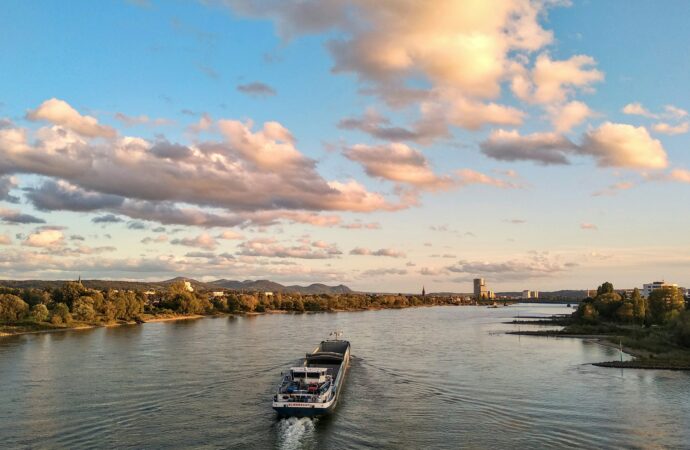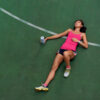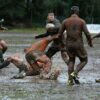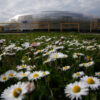Rhine-Ruhr 2025 pre-Games sustainability and legacy paper demonstrates FISU’s pioneering design to host large multi-sport events
It seems obvious that organising any event should be interwoven with its central stakeholder group. In sport, this group is the athletes as no event can take place without them, yet they tend to be excluded from the planning process.
But when central stakeholders are actively involved with participants and organisers, it creates optimal conditions that benefit everyone.
That’s the case at Rhine-Ruhr 2025, where students – both those participating as athletes and not – and representatives of universities have their fingerprints all over the event.
High-level academic institutions often tackle lofty, complex questions and the Rhine-Ruhr 2025 organising committee is no exception. Its recently published pre-Games sustainability and legacy paper asks, “How can a positive social impact be created, and the values of sport – such as respect, fair play, cohesion, and commitment – be conveyed and strengthened?”
Many sports events aspire to address this, but how many actually achieve it?
“The focus of our strategy for the FISU Games is on reducing environmental impact, strengthening the regional economy and maximising social projects,” says Prof Dr Holger Preuß, Rhine-Ruhr 2025 FISU Games supervisor for Legacy and Sustainability.
The paper acknowledges that while past focus for sport events has been on economic sustainability (financial profit), ecological, social and governance aspects are just as crucial this time around.
Zooming in and out
Throughout the pre-Games report, it’s clear that the OC desires a multifaceted sustainability approach and outcomes, communicated across the report’s two main sections:
– ‘Zoom-in’ – immediate operational measures
– ‘Zoom-out’ – legacy
Zoom-in reflects on the United Nations Sustainable Development Goals, German Sustainability Code (DNK) and GRI performance indicators. An initial materiality analysis was conducted between May-December 2023 to determine Rhine-Ruhr 2025’s sustainability strategy focuses, while the academic audit of these focuses was carried out by the project group ‘Sustainable [major] sporting events in Germany’ (Nachhaltige Sport[groß]veranstaltungen in Deutschland) between February-March 2024.
The underlying theme of developing the strategy and pre-Games paper is participation. Indeed, the OC states that the paper does not mark the end of Rhine-Ruhr 2025’s sustainability concept, but serves to “transparently present the current status (early 2024) of the planning and to encourage and invite participation.”
The Federal Ministry of the Interior and Community, the State of North Rhine-Westphalia, the German University Sports Federation and the relevant national sports federations were all involved in the design process, but the key group were universities themselves. A university workshop with a total of 151 students (both in-person and remote), doctoral candidates and other representatives from 15 different universities helped shape the sustainability approach.
‘Steerable areas’
The OC has focused on four “steerable” areas regarding environmental sustainability:
1. Use of existing sports and event venues
2. Low-emission mobility solutions
3. Renewable energy sources
4. Resource-friendly procurement and waste management
Potentially the most eye-catching interventions here fall under low-emission mobility solutions, the largest contributor to the event’s carbon footprint. Low emission modes of transport are one factor, such as the conversion of old railroad lines into cycle paths between the Ruhr region’s cities.
To shorten travel distances, though, “a conscious decision was made not to build a new athletes’ village” and to instead provide decentralised accommodation for accredited athletes in hotel clusters located in the respective cities. This means that, in some areas, training and competition venues can be reached by walking.
To promote education and engagement, the event is aiming to involve the entire education system. Firstly, an international lecture series focusing on innovation, sustainability and intercultural exchange is planned for the 2025 summer semester to be held by academic institutions and hosted digitally for all universities, lecturers, students and interested parties.
At the secondary level, students at schools in North Rhine-Westphalia, will ‘Adopt A Delegation’ from the 170+ participating nations at Rhine-Ruhr 2025 to expose students to the cultures of other nations. The schools will be integrated into the official delegation programme of the event to further promote cultural exchange.
Finally, children at the primary level will become experts, or ‘Kids Perts’, in one or more sports at Rhine-Ruhr 2025. Besides sport-specific knowledge, workshops will focus on language development, presentation skills and strengthening self-confidence.
During the event, the Kids Perts can pass what they have learned to interested spectators at a dedicated Kids Info Point, while a select few will have the opportunity to do the same as child reporters, moderators or presenters.
Handprint over footprint
This section of the pre-Games report was written by Anja Kirig, a freelance futurologist who focuses on social change processes. Here, Kirig determines environment, economy, health, society and culture as the five legacy impact dimensions of Rhine-Ruhr 2025.
Rather than focusing on the ecological footprint of the event, which Kirig defines as quantifying the negative impact on the environment to minimise it, she draws attention to the handprint approach which “emphasises the potential for positive long-term development and the ability of individuals and communities to improve society through proactive action.” Crucially, Kirig determines that organisations and people that actively contribute to increasing their handprint thereby reduce their ecological footprint.
Kirig believes that Rhine-Ruhr 2025 has a “thematic advantage” in the modern zeitgeist.
“Sport and exercise have become a spirit of the time, which is also noticeable in entrepreneurship,” presenting the opportunity to use ‘Sportivity’ as an “economic driver”. This phenomenon is the growing awareness of sport and exercise in society being reflected in a 21st century attitude to life, based on the desire to maximise quality of life through physical and psychological satisfaction.
Approaching this economic aspect from a governance perspective, Kirig promotes the idea of Rhine-Ruhr’s organising committee continuing to function after the event, citing the ARU (Agenzia regionale per l’Universiade). The ARU was responsible for organising the 2019 World University Games in Naples, which today operates under the name ARUS (Agenzia Regionale Universiadi per lo Sport) as an important sports policy player in the region.
Looking more broadly than the event itself, Kirig asserts that “the desired transformation is to move from an individualised society, in which the individual and their needs are at the forefront, to a form of co-individualisation.” She recognises the occasion of Rhine-Ruhr 2025 to “exchange ideas on an equal footing” and “the planned cultural programme provid[ing] the launch pad for a legacy” to strengthen civil society and democracy, eventually “creating a future worth living for everyone.”
Finally, Kiring believes that interaction between the five host cities “represents a starting point for a resource area in which a common identity can be created not only for the region, but also for the sports landscape.” Within this identity, actions such as lifelong learning and open innovation are raised to transform from “a closed system to an open cosmopolitanism” that paves the way towards an “integrative culture of the future.”
The middle way
The pre-Games paper illustrates a detailed systematic approach to Rhine-Ruhr 2025 that doesn’t merely indicate a light reference to ambitious and far-reaching sustainability goals, but backs these assertions up by declaring how they will be practically implemented.
Universities are, of course, where many of humanities great breakthroughs have happened, so I for one am eager to see whether the largest multi-sport event of 2025 being delivered through the university apparatus, in a time where sustainability concerns and innovation progress are both exponentially increasing, will prove to be the holistic and enduring blueprint that the sector has been trying to refine and perfect, but is still waiting to find out how.
Opt into our weekly newsletter for exclusive content focused on sustainability strategy, communication and leadership for sport’s ecosystem.










Leave a Comment
Your email address will not be published. Required fields are marked with *